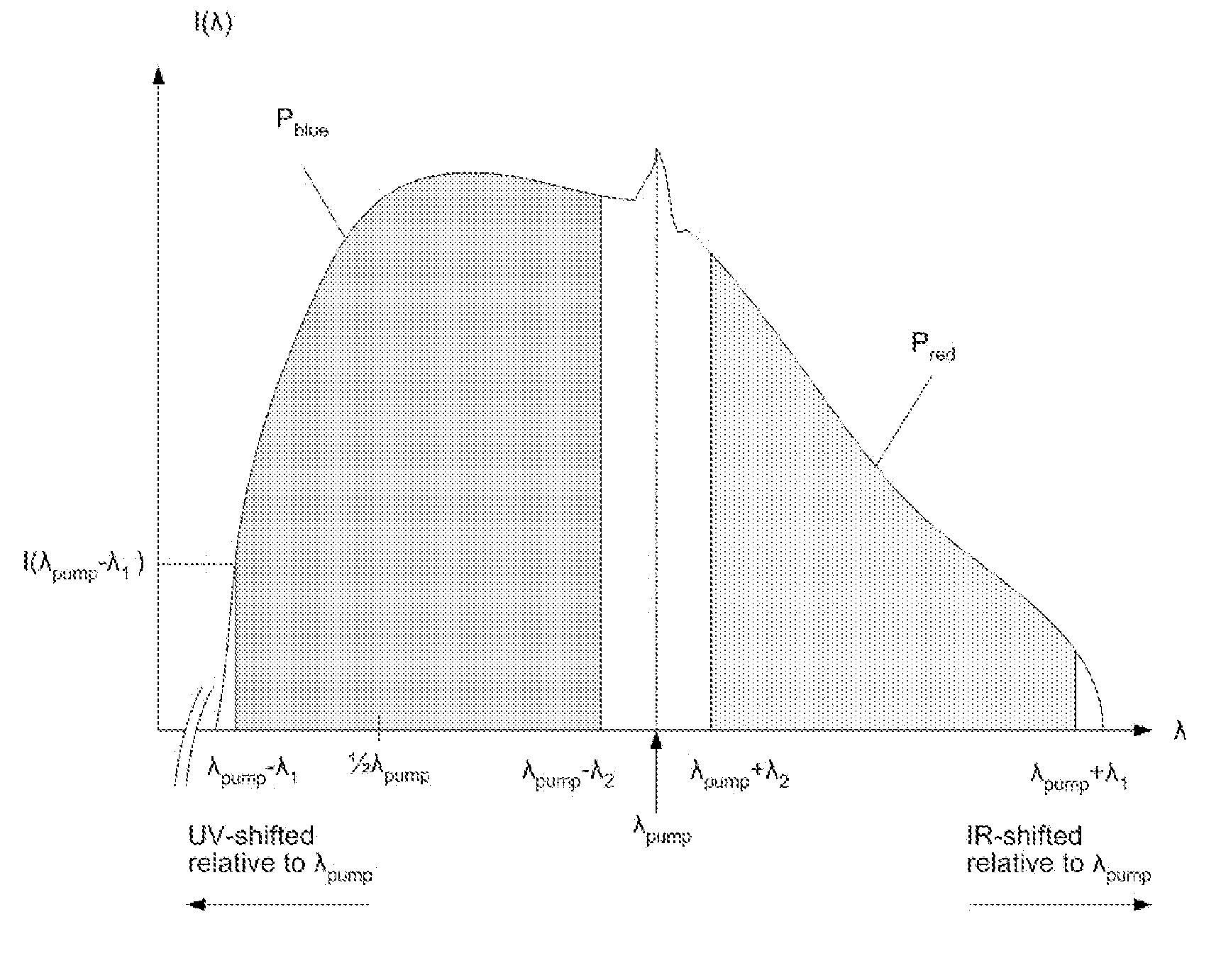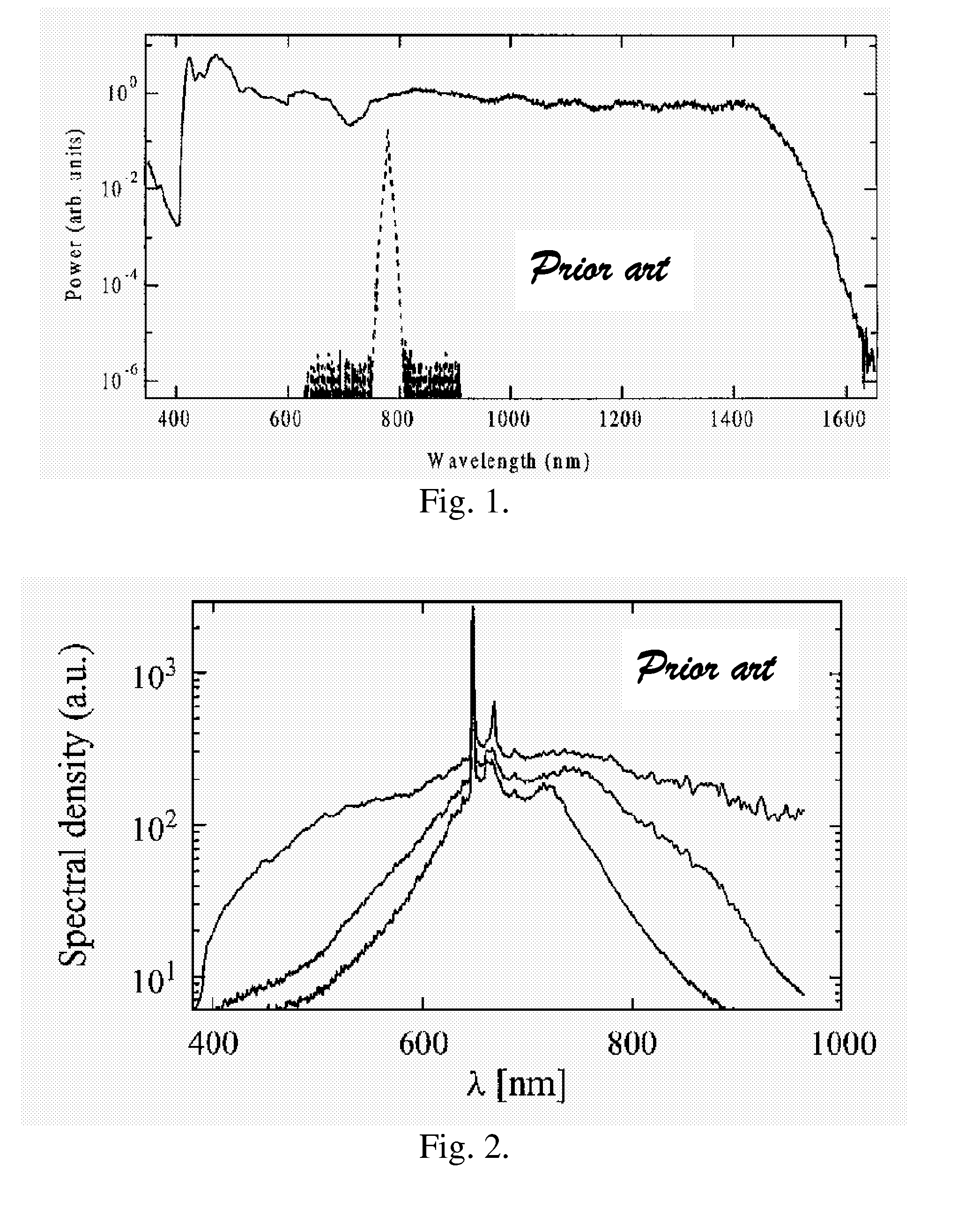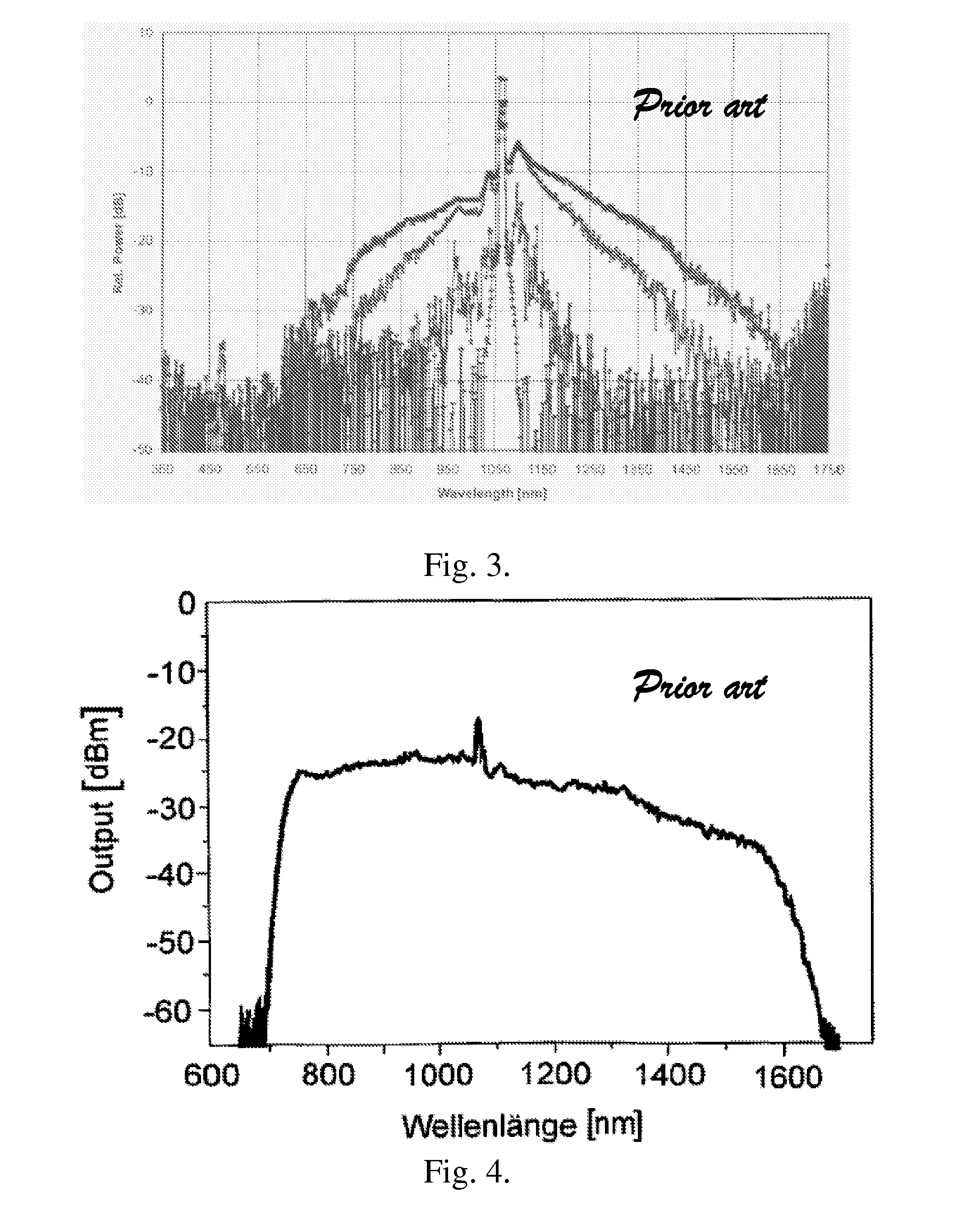Blue extended super continuum light source
a super continuum and light source technology, applied in the field of super continuum light generation, can solve the problems of little exploration of the possibility of tailoring the properties of mfs to improve the efficiency of sc light generation using pico- or nanosecond pulses, and achieve commercially viable sc light sources
- Summary
- Abstract
- Description
- Claims
- Application Information
AI Technical Summary
Benefits of technology
Problems solved by technology
Method used
Image
Examples
example 1
[0092]The microstructure fibre of example 1 consists of a 3.5 μm diameter silica core surrounded by an array of 1.1 μm diameter air holes in a hexagonal close packaged arrangement (also known as a triangular pattern) with a hole centre to centre distance of about 2.44 μm. The fibre is produced by Crystal fibre A / S (of Birkerøod, Denmark) and has the product name NL-3.5-975. Experimentally the fibre appears to be endlessly single mode and insensitive to bend loss up to at least 1700 nm. The fibre holds a zero dispersion wavelength at 974 nm and anomalous dispersion for all wavelengths above this wavelength. The pump laser source applied in the present example is produced by Fianium (of Southampton, UK) and has the product name FEMTOPOWER 1060, operation at 1064 nm and delivering 10 W of average power. The 6 ps pulses with a repetition rate of 80 MHz and a peak power of 16 kW are launched into the microstructure fibre. This generates by the action of modulation instability a pulse tra...
example 2
[0097]In this example the fibre of example 1 is subjected to excitation pump pulses with considerably longer pulse duration and launched quasi-cw pulse energy. The generated spectra of a 6 ps launched pulse width of 80 MHz repetition rate and a 2 ns launched pulse width of 28 kHz repetition rate both with a peak power level of 2.5 kW are shown in FIG. 8. The second excitation source is a combined Nd YAG laser crystal with a Cr:YAG saturable absorber pumped with a 808 nm GaAs diode laser.
[0098]Surprisingly, it is to be observed that the two spectra are similar despite the very different excitation conditions. As the two spectra both are generated with equal peak power it is, however, according to the teaching of the present invention, equal modulation instability conditions that is set by the fibre. It will therefore be pulse trains containing individual pulses of equal duration and peak power that is generated by the two different launched pulses. As these individual pulses are subs...
PUM
| Property | Measurement | Unit |
|---|---|---|
| wavelength | aaaaa | aaaaa |
| zero dispersion wavelength | aaaaa | aaaaa |
| zero dispersion wavelength | aaaaa | aaaaa |
Abstract
Description
Claims
Application Information
 Login to View More
Login to View More - R&D
- Intellectual Property
- Life Sciences
- Materials
- Tech Scout
- Unparalleled Data Quality
- Higher Quality Content
- 60% Fewer Hallucinations
Browse by: Latest US Patents, China's latest patents, Technical Efficacy Thesaurus, Application Domain, Technology Topic, Popular Technical Reports.
© 2025 PatSnap. All rights reserved.Legal|Privacy policy|Modern Slavery Act Transparency Statement|Sitemap|About US| Contact US: help@patsnap.com



